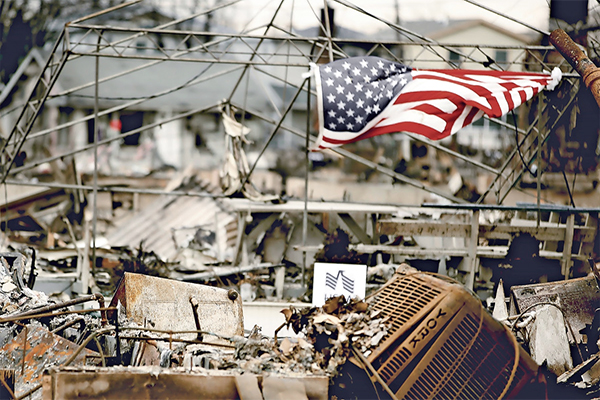
My dear brothers and sisters in the Lord,
Since 2001 — almost 20 years, which marks a generation — the metropolitan area, and especially our own city of New York, particularly in Brooklyn and Queens, has witnessed some tragic events that have called forth from us some good and, at times, heroic responses. As we think back to September 11, 2001, we remember how difficult the terrible situation was here in Brooklyn and Queens with so many victims and so many first responders dying and then getting ill directly or indirectly afterward.
Shortly after, American Airlines Flight 587 crashed in Belle Harbor, Queens. All aboard the plane lost their lives, as well as some of our own who died on the ground in that neighborhood. And what about the recession in 2008? Although New York was spared the worst of the unemployment problem, all were affected in one way or another by the loss of money in the market and a general recession. Superstorm Sandy, in 2012, was another event that particularly hit Brooklyn and Queens, especially in Breezy Point. We know the suffering that happened at that time, somewhat similar to the confusion that we face now, especially at the beginning of COVID-19, a pandemic in which we still find ourselves embroiled.
If we look at some aspects, we see that the response that followed in 2001 truly showed the best of our federal, state, and city government and especially that of our own people. There was a wonderful coming together of people in a way that was so unique in the face of such a great tragedy.
The death toll from the victims of the attack on New York, Virginia, and Pennsylvania was nearly 3,000 lives lost. We saw, however, how this affected so many across our country. This was especially so here in our Diocese in Brooklyn and Queens, as everyone seemed to know at least one person who perished, or knew someone who was a first responder.
The recession of 2008 was somewhat of a muted response. Difficulties were had by many. And yet, we bounced back in a relatively short period of time, whereas the psychological recovery of 9/11 still remains with us to this day to some extent. Then Superstorm Sandy, in 2012, perhaps tried our patience again, although the response from all sectors was a good one. Unfortunately, however, for some, the road to recovery still exists as some have not yet returned to their homes. And now with the COVID-19, perhaps we see the best response yet, most especially with our first responders — EMT, police, fire department, doctors, nurses, and hospital staff, as well as those who keep the pharmacies and supermarkets open for us — and more who again are mirroring the tremendous sacrificial work of 2001.
What can we make of this? How do we understand this situation where in 2001, there were almost 3,000 deaths and as of today, in the State of New York alone, we have nearly 14,000 deaths; 60% of the deaths in New York City, believe it or not, have happened in Brooklyn and Queens. We truly have been put to the test and have not been found wanting. More importantly, perhaps, we need to understand the religious practice that has ensued from these tragedies, tragedies of the human person and tragedies of nature. It has been said that God always forgives, man forgives sometimes, and nature never forgives. Well, the two tragedies caused by human persons — the attack on the World Trade Center perpetrated by deranged men and the recession of 2008 perpetrated by greedy persons — perhaps can find a place in our memory that is more understandable than the two effects of nature — the hurricane and the virus. They leave us truly without understanding.
Religiously after 9/11, we saw that there was a great return to religious practice and faith. While this return did not last forever, there was a true return to understanding the place of faith in our lives.
That was less so in the recession of 2008 and more so in the aftereffect of Superstorm Sandy, especially in certain places that truly were hard hit. It has been hard to gauge how people have returned to the practice of their faith. Sandy, too, gave us a time when we were not able in our churches to find the solace that we normally seek.
And what will happen after coronavirus? We do not know yet. Will we see a greater return to religious practice? Certainly, in this period when we have been deprived of being able to practice our faith, we see a tremendous outpouring of people viewing our Masses live-streamed from our many parishes in Brooklyn and Queens, and Masses on television aired live on our cable channel, NET-TV, as well as expressions of faith in many media outlets.
Hopefully, in the near future, as we conclude this challenging time of isolation, we will see a greater return to the practice of faith, understanding as we have during this 20-year period of generational challenge experienced by our Diocese, that, indeed, faith is truly the only thing that lasts and survives all types of tragedies.
Join me, my brothers and sisters, as we put out into the deep trying to understand how our present generation has been tried and tested and not found unworthy of understanding the trials of life we bounce back from with greater resiliency, not only naturally but also religiously. We pray that as we come out of this coronavirus tragedy that some good will result, especially in deepening our faith.
